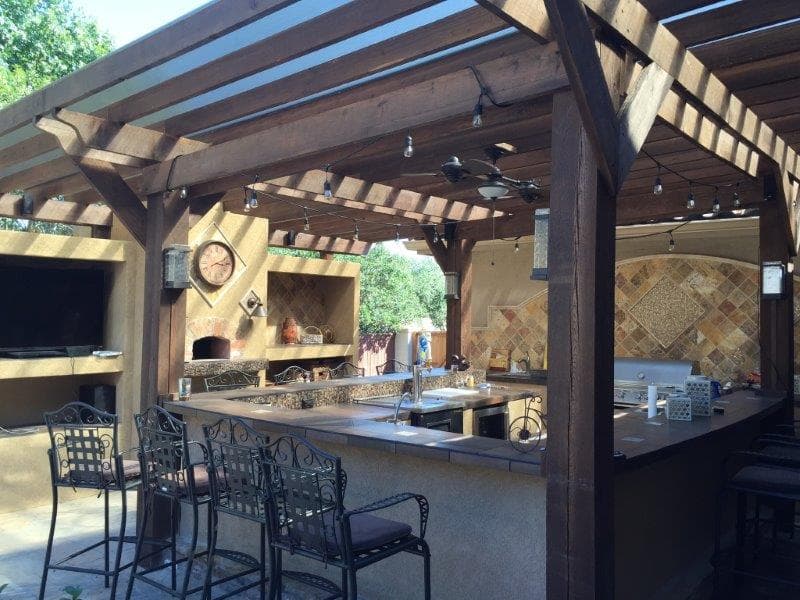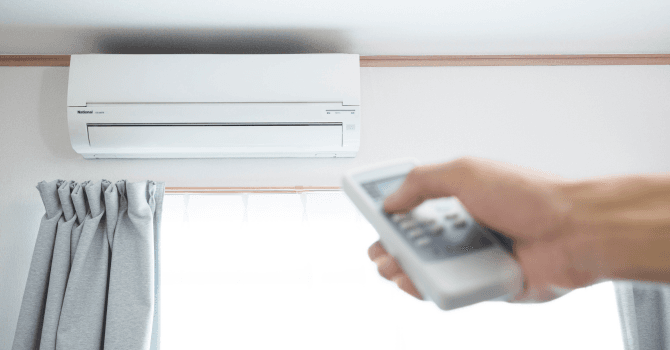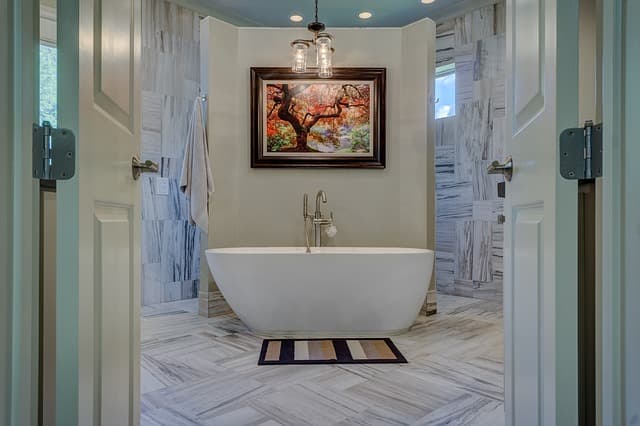Building an Ecological Home? What to Know Before Starting
By Équipe éditoriale
Updated on December 10, 2024

It’s no secret that over the past few years, green construction has grown in popularity and for good reason! An ecological home is trendy due to its green efficiency, its lack of carbon footprint as well as its eco-friendly capabilities.
As green technologies have significantly evolved over the past few years, there are now plenty of ways to build sustainably that didn’t exist before. However, as with any home renovation, this is a big project to take on.
Therefore, it’s important to know the ins and outs of building an ecological home. Luckily, we’re here to help! Read on for all of the important information:
10 Things to Know About Building an Ecological Home

Source: Canva
1- The cost of an ecological home
Until a few years ago, an eco-friendly home could cost 5% to 10% more than a traditional house. The bill tended to go up when it came to green technologies, due to the scarcity of materials and skilled labour for this type of work.
Today, green construction is in high demand and some entrepreneurs specialize in this sector, as the market is very successful. As a result, building an eco-friendly home does not necessarily cost more than a conventional home, as most eco-friendly materials do not generate any extra costs.
However, the price will tend to increase if you install solar panels, a radiant floor or a heat recovery system for hot water. However, such expenses are mostly an investment that will save you money in the long run. Such a building will save you between 30% and 70% in terms of energy consumption.
In self-construction, a new eco-friendly home will cost about $100 per square foot. If you hire a contractor, it will cost you between $150 and $220 per square foot, not counting the cost of the land, excavation, sanitary and drinking water connections, as well as landscaping, it's relatively the same price as for a conventional home. However, an eco-friendly home will sell for more than a traditional home.
2- Research and planning is key
Planning is certainly the key to the success of your green home project. Emmanuel Cosgrove, CEO of Ecohabitation, believes that ''from experience, a good margin of error, up to 20%, is the rule to prevent it from turning into a nightmare''. You will understand, in construction as in renovation, you should never budget to the penny, always aim a little wider to prevent any problems. So setting a realistic budget will be the first step before you start researching.
What will you be looking for? This research is particularly relevant to building materials, green technologies and other design elements that will help you reduce your environmental impact. It must be said that today, there are countless durable materials and systems to save you water, energy, or that will increase your comfort.
It is up to you to do the necessary research to establish the pros and cons of the various elements. It is obvious that if you call on an eco-friendly builder, he will be able to advise you all the more according to your goals and your needs.
3- The location of the house
In the city, in the countryside or the nearby suburbs, you will certainly wonder about the location of your new home. Some people mistakenly think that for a house to be eco-friendly, it must be in the countryside, yet it is not.
For a home to be environmentally friendly, you need to be close to the office, daycare and grocery store to minimize the polluting emissions caused by transportation. If you can access several services on foot, by bicycle or by public transport, this reinforces the ecological aspect of your home.
On the other hand, an eco-friendly house must be built depending on its environment. Thus, the plans will be designed according to the particularities of your location and therefore depend on the sun, prevailing winds, soil, flora and fauna and other elements. An eco-friendly house must be passive, meaning that it must make the most of its environment and its location.
You will learn that it is necessary to think about the orientation of your home, including living rooms so that they are exposed to the sun in summer and winter, which will reduce your energy bill. This is referred to as a passive solar house.
In the same way, it is recommended to install your kitchen to the south or southwest and equip it with large glazing to recover the heat that radiates through inertia. By combining sun exposure with effective insulation, it is possible to cover at least 50% of your heating needs.
4- Size does matter
Of course, the main point of building sustainably is keeping energy consumption and costs down. For this reason, it is best to avoid going all out and building a mansion when all you need is a mid-sized house. Build only what you need and avoid excess. When a home is too large, it will contain plenty of unused space and in turn, will place extra pressure on heating and cooling systems.
You don’t have to own the tiniest home on the block but bear in mind that smaller homes have a smaller environmental impact. Since we’ve already concluded that planning is key to building an environmentally-friendly home, plan all architectural elements well in advance, being mindful about the amount of space yourself and your family require.
5- Insulation is important
Insulation is one of the most important aspects of building an ecological home. This is because heating and cooling account for 50% of your energy consumption. Air leaks can happen in places that we least expect, including around windows, doors, ductwork and in our attics and basements.
These leaks lead to excessive use of heating and cooling systems. Therefore, to own an eco-friendly home, it must be correctly insulated. Proper insulation will work to reduce energy consumption and bring down electricity costs significantly.
6- Try exploring alternative power sources

Source: Canva
Using alternative sources of power is an excellent way to reduce costs while harnessing the powers of the environment. Solar power has grown in popularity over the past few years, and this is because it’s the ultimate source of clean energy. Including solar power into your eco-friendly home will need to happen in the planning process.
This will include correctly positioning your home to face the sun's rays and get the most exposure possible, as this will have a huge impact on how much power they obtain. In some cities and provinces, solar power and alternative power methods will be subsidized by the government. Do a bit of research and see if this happens to be true in the area where you’re living. Finally, it should be noted that in places without sufficient sunshine, using solar energy may not be possible.
Geothermal energy is another possibility when it comes to harnessing the earth's power to provide power to your home. This is a less common method, as it isn’t exactly popular yet it will require a large property as well as an upfront investment. However, if within your budget, geothermal energy is the way of the future.
7- Energy-efficient water systems make a difference
Again, depending on the area of the country where you reside, there are environmentally-friendly options on the market to allow you to harness rainwater. Installing a rainwater harvesting system will allow you to collect rainfall and store it in tanks. This collected water doesn’t necessarily need to be used to take a shower, but can instead go towards your toilet or sprinkler system. Rain barrels are another common way to collect and save rainwater.
There is also the possibility of a tankless water heater, heating only a necessary amount of water instead of an excessive amount. This will cut down on energy costs while eliminating the storage space needed for a hot water tank. There are also appliances on the market that ensure a low flow, helping you to save water, energy and in turn, money.
8- The choice of materials for a green home

Source: Canva
In ecological construction, the choice of materials refers to three main elements: the health of the inhabitants, respect for the environment and energy savings. Thus, each material selected must meet these criteria as much as possible for the house to be environmentally friendly. The green construction and renovation market is booming in Quebec. There are various renewable natural materials such as:
Wood
This material is very successful in terms of ecological construction and for good reason, its advantages are undeniable. Wood is easy to implement and reduces the use of water on the site, it is resistant and is a good insulator. Also, manufacturers are now designing wood with high fire resistance.
Hemp
An ecological plant par excellence, hemp grows very easily. It requires little fertilizer, little water and no pesticides. When mixed with lime, its fibres are a perfect concrete that will be deposited between formwork boards.
Raw Soil
It is a recyclable, renewable, non-polluting and locally available material. It has the advantage of absorbing and restoring moisture, it regulates the temperature by thermal inertia and is a very good sound insulator.
9- The choice of furniture
The choice of furniture should not be taken lightly, either in the compositional materials of the furniture or for the design of the appliances. Choose furniture with locally produced wood from certified forests (the vast majority of Quebec's forests are).
As a result, the carbon footprint is greatly reduced, as transport-related CO2 emissions will be lower. As far as appliances are concerned, Energy Star products are recommended by Hydro-Québec. They will save you energy in the long run.
10- The construction of green homes
More and more entrepreneurs are specializing in green construction, both on site and for the result, and for good reason, this sector is booming. With prices similar to conventional homes, new homeowners prefer to invest in new eco-friendly homes that maximize their long-term energy savings.
Get 3 renovation quotes for your eco-friendly renovation project
RenoQuotes.com can help you get quotes for your eco-friendly renovation project. If you submit your project to us, we’ll put you in contact with top-rated contractors. Fill in the form on the homepage (it only takes a few minutes), and you will get estimates from trusted professionals.
Dial 1-844 828-1588 to speak with one of our customer service representatives
Looking for something else?
Related articles
The latest industry news, interviews, technologies, and resources.

Équipe éditoriale
•07 Nov 2023
As the weather outdoors begins to warm up, there’s not much we’re thinking about other than finding ways to spend time outside. Maybe this is the year you’re finally going to build and install an outdoor kitchen in your backyard! When it comes to designing an outdoor space, functionality, practicality, and personality are very important traits. In the project planning process, be certain to keep your lifestyle in mind as you’ll be more likely to make use of the space if it works in accordance with your wants and needs.

Amanda Harvey
•12 Apr 2024
Have you ever heard of reversible air conditioning? While this term is often seen in articles about general air conditioning facts, few can explain its true meaning.

Christine Simard
•04 Oct 2024
Are you shopping for ceramic tiles to spruce up your kitchen, living room or bathroom? Well, you are absolutely right, since ceramic has a charm and an allure that can only enhance the cachet of your home. The choice of styles and colors has never been wider for this timeless material.

Editorial Team
•07 Nov 2023
During wintertime, it’s only natural to feel a bit of a chill. But what happens if you’re already inside your home and can’t shake that frigid feeling? If your heating system is blowing cold air, or if one room feels oddly chilly, then you could have a problem! To have a constant flow of comfortable air, it is important to have your heating system checked roughly once a year for issues, making sure everything is in good working order.

Editorial Team
•18 Jun 2025
Real bricks and fake bricks are currently a staple on the home decor scene: when used as a wall covering material, they add a lot of warmth and character to interior decor. Learn more about the different characteristics of this material, which is durable and stylish.